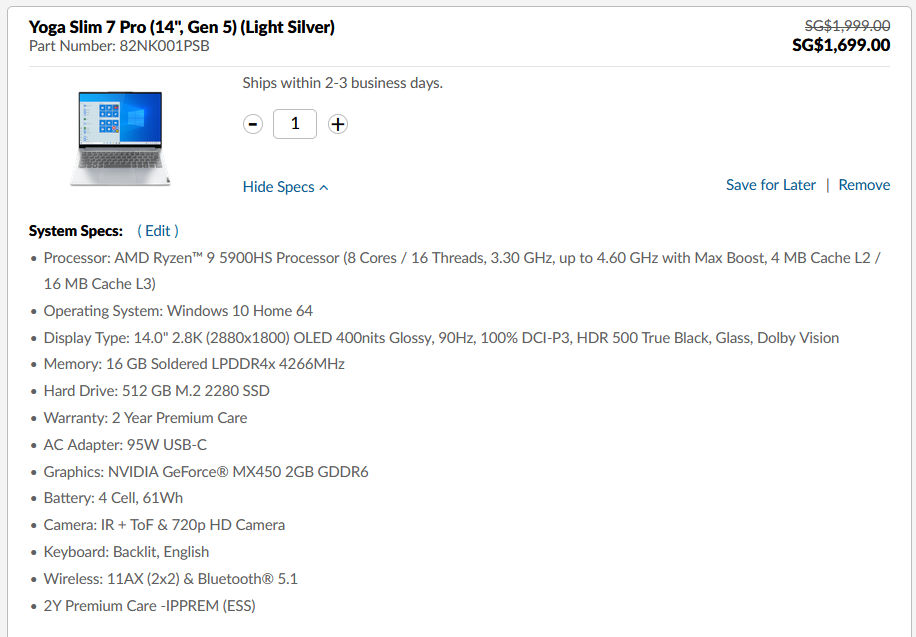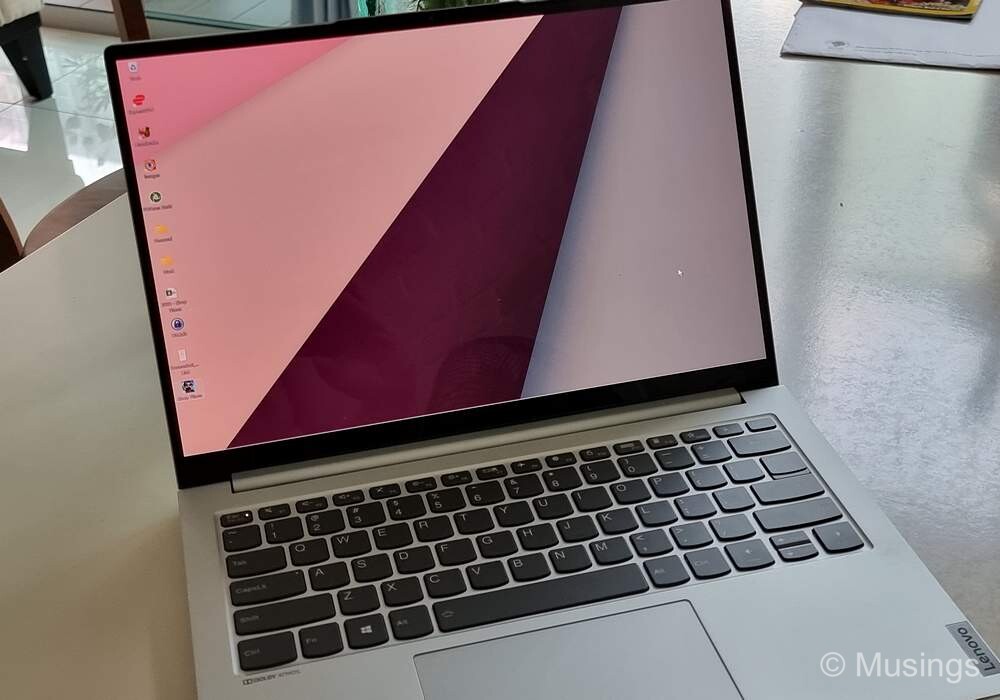It’s certainly a sign of coming old age when I have to change my daily laptop driver largely because I’ve found myself squinting at the laptop screen! That pretty much sums up why – as lovely as the two year old Dell XPS 13 9380 has been – I had to look for its 2022 replacement that would be roughly as light and portable, and this time with a 14″ screen. The Dell XPS 13 has borne up remarkably well since I picked it up just over two years ago, and free of snicks and scuffles – helped also in part because of the DBrand skin I put on the top lid. Thermal dissipation though is noticeably poorer now, and even under medium loads, the XPS 13 gets pretty toasty.
This would actually be the second laptop I’ve already picked up for 2022. The first was a Surface Pro 7 that I got for the daughter and for use in her school: it was obtained with a nice discount, as the Surface Pro 8 was finally coming to Singapore, and stores here seemed to be gradually clearing their stocks of the older Pro 7 model.
My requirements for my Dell XPS 13 replacement:
Charging via USB-C. There are increasingly more laptops these days that support this standard, as opposed to using its own proprietary connectors. The upper power draw limit for USB-C does limit the performance level of the laptop, but this wasn’t really an issue as I wasn’t going to get a larger than 14″ laptop nor one that was for gaming.
Higher-refresh screen: 2021 starting a steady trickle of laptops with display refreshes exceeding 60Hz. That piqued my interest, though whether it would finally offer any real tangible benefit in my usual work use cases I was less certain of.
A 16:10 aspect ratio display. The last several laptops I’ve had used the more common 16:9 ratio – which was fine for media consumption, but less useful for productivity.
Something that I could preferably obtain with educational discounts.
Like every other tech toy I pick up, there were a bunch of models I was considering these several months of search. They included:
Aftershock Lunar Z14: very light, compact, offered a 90Hz display, and reasonably priced. But build quality seemed a little flimsy. Reportedly had semi-poor battery life.
LG Gram 14: The 2021 iteration of LG’s very successful super light series of laptops. Reasonably priced, crazy long battery life, but comes with a 60Hz display, and like the Lunar Z14, the build and feel did not inspire confidence.
Dell XPS 13 9310: candidly, the XPS 13 9380 but with a 16:10 aspect ratio screen. The XPS 13 series continues to have fantastic build, great keyboard – and I was tempted to buy the newer iteration were it not for the fact that the display was only marginally bigger at 13.4″, and still also with a 60Hz refresh.
Lenovo Yoga Slim 7 Pro: a laptop model with a very large number of configurations, and highly praised for their modest price point, great build, and performance.
I’d been particularly interested in the Yoga Slim 7 Pros and had been keeping an eye on its models and prices from mid-2021 onward. The span of models is very wide, and are differentiated by resolution of the display, display aspect ratio, refresh rates, and processor type. This is one of those laptop series that come in both AMD and Intel equivalents, with the AMD models generally outperforming the Intel ones – though the upcoming 12th Gen Intel CPUs might change things quite a bit again.
And the model I finally settled on, and before discount:


Continued in the next post!
Recent comments